Managing chaos, manufacturing innovation, rolling up with Brian Steel
In this podcast episode, Brian Steel, CEO of Cadrex Manufacturing, discusses the challenges of acquiring, merging, and integrating multiple metal fabrication businesses under one organization.
He emphasizes the importance of aligning technical expertise, managing capacity, and implementing ERP systems. Steel highlights the need for speed and agility in the industry and the importance of people and culture in the integration process. He also discusses the use of data and automation in improving efficiency and decision-making. Steel sees the acquisition strategy as a way to build trusted partnerships with innovative companies and rapidly bring their ideas from concept to scale.
Steel believes there is a need for large, fully integrated mechanical solution providers in North America and sees the opportunity for organic growth in the industry as well. He also emphasizes how he’s optimistic about the future of the fabrication industry and sees it as a great time to be in the business.
At the top, the guys talk about Cadrex's impressive and aggressive roll-up strategy, and how's it's impacted The Fabricator's FAB 40 list. There's also a mention of Dig Dug.
Email us at podcast@fmamfg.org with any comments, questions, or suggestions. Learn more about podcast sponsorship opportunities.
In This Episode
Learn more about FMA's Pipe + Tube Conference.
Learn more about Golf4MFG South.
Learn more about podcast sponsorship opportunities.
Learn more about Cadrex Manufacturing
Learn more about The Fabricator's FAB 40
TRANSCRIPT
Dan Davis: It's exciting. I mean, kind of be on that cusp of trying to do the new stuff as opposed to just relying on the old stuff.
Brian Steel: Yeah, I'd say exciting is the positive way to look at it. It's the way I look at it.
Tim Heston: Exciting is the positive way.
Brian Steel: I'm an optimist, so that's how I view it.
Tim Heston: There you go.
Sara Spring: If you're involved in the pipe and tube industry, you won't want to miss the Pipe and Tube Conference this May in Omaha Nebraska. This event is an excellent opportunity to connect with industry experts, stay up to date with the latest technologies, and explore new business opportunities. You'll leave the conference with a wealth of knowledge and new connections to help your business succeed. So mark your calendar and join us in Omaha for the Pipe and Tube Conference. Register today at fmamfg.org, and now back to the episode.
Dan Davis: Hello. Welcome to the Fabricator Podcast. I'm Dan Davis with the Fabricator Magazine. Today special guest, with our special guest. It's Tim Heston of the Fabricator-
Tim Heston: Magazine.
Dan Davis: Joining us will also be Brian Steel of Cadrex.
Gareth Sleger: Great name.
Dan Davis: Yeah. Works for this industry as opposed to Brian Pressbrake, which is awkward.
Tim Heston: Brian Pressbrake might be an interesting. Yeah, no.
Dan Davis: So stay tuned. Cadrex is a organization that's pulled in 11 acquisitions.
Tim Heston: So far.
Dan Davis: Yeah, 22 facilities, I think he mentioned, one of which is in Mexico, and they just recently expanded. Plans to probably even grow more come 2025. Actually need to take this year, I think, to get their organization working as one being that they've brought in so many disparate companies. But it also reminds me to promote our Fab 40 list coming up in June. And Tim, you're heavily involved with that.
Tim Heston: Oh yeah.
Dan Davis: Yeah. By no means is it a totally in-depth analysis of every large metal fabricating operation in the US, but we do look at it as being a nice snapshot.
Tim Heston: It's a benchmark, I call it a statistical snapshot because you've got a few large shops and then a longer tail. Though what's interesting in recent years is that tail's been getting fatter and fatter. These shops at the very end, the same shops have been participating and you see that revenue just quadruple, quintuple over the last 10 years we've run this. Well, actually this is the 14th year we've run Fab 40, I believe. And so it's a benchmark of where this industry is because most, as you know, you can't go to the SEC 10 K's to look out the revenue, you have a few shops except perhaps one or are publicly traded. So it's a window into their revenue snapshots, their growth projections. And Cadrex is a recent participant because they rolled up a few other shops that were previously in the Fab 40.
Dan Davis: Correct.
Tim Heston: So they shot right up to the top five. And so-
Dan Davis: Yeah, number Two.
Tim Heston: Number two. Yeah. And so we'll see where they stand this year. But it's an interesting success story, specifically how quickly it was rolled up. And it's an integration, I should say, its roll up as an industry jargon, but it's a sophisticated integration that they're doing as far as speed. Speed of the acquisitions have just been just mind-boggling. So it's a good story to tell.
Dan Davis: Yeah, I think some metal fabricators might ask why should I be interested in large companies like this? Outside, maybe they'll come knock on your door one day and want to purchase you.
Gareth Sleger: We were talking, he could be your future boss.
Dan Davis: My goal is that this podcast lasts long enough. We'll have an episode where we'll actually have someone who sends in a submission and we'll actually sell a business on-
Tim Heston: That's right.
Dan Davis: ...on the air with a guest.
Tim Heston: What multiples will you take?
Dan Davis: But that's it. But I think to go back to my point is that companies like this are a flexion of the resurgence of metal fabricating manufacturing in North America. And if they're doing well, odds are the industry is doing well.
Tim Heston: Right. And it's also a reflection of generational shift because so many businesses are up for sale. It's a perfect storm. I've been talking to some folks and they've been telling me, "Yeah, my kids didn't want to be in manufacturing. But of course when they were growing up in the 90s, globalization came roaring in and the business wasn't too fun. And then in 2002, 2003, we've been growing steadily ever since, and now we're going gangbusters. And my kid's a doctor."
Dan Davis: Oh, well.
Tim Heston: No, it's not that. But it's just that generational shift, that handing off of the torch is not going, it's not as common as it used to be. And there's also, they're seeing the advantages of scaling up because there's so much demand because people just need to just press on the accelerator, press on the brake, press on the accelerator, press on the brake to meet this demand that's coming from overseas. And it's a challenge.
Dan Davis: And with the new generation comes new ways of thinking. And part of the discussion we'll have with Brian focuses on automation, but not on the shop floor per se, even though they do heavily invest in that. But a lot of front office stuff. And to me, we have a columnist, Caleb Chamberlain, who's all about software. And these kids grew up with... I don't know if they're all coding, but they grew up with computer devices in their hands from day one. Whereas I grew up with Pong and that didn't get you very far enough in the tech industry. So I think with the generational shift in business ownership and new blood coming in, it's once again ties in with a new day for metal fabricating in North America. So we've covered a lot of territory.
Tim Heston: Covered a lot of territory.
Dan Davis: I think Brian will help fill in the holes that we just glide it over.
Tim Heston: And meanwhile I'll get back to Dig Dug.
Dan Davis: Yeah, there you go.
Tim Heston: Wow. Did not expect a Dig Dug reference.
Dan Davis: Game over, dude. All right. Enjoy this episode.
Sara Spring: Spring is right around the corner, which means it's time to dust off your clubs and get ready for Golfer Manufacturing South. This event is a fantastic opportunity to network with peers and contribute to NBT's manufacturing camp and scholarship programs. Enjoy a day of golf while supporting a great cause. This April 15th at TPC, Piper Glen in Charlotte, North Carolina. Save your spot today at fmamfg.org. And now back to the episode.
Dan Davis: Welcome back. Thanks for joining us. Today's guest, Brian Steel. Thank you for coming.
Brian Steel: Glad to be here.
Dan Davis: Brian's with Cadrex. We're going to have a good conversation about not only his company, but what's happening with his organization and how that reflects what's happening in metal fabricating today. So first off, why don't you... First off, you have a great name for this business.
Brian Steel: That's right.
Dan Davis: You probably heard it multiple times, but yeah, I think it works.
Brian Steel: Yeah, so funny story. It was literally my first day of the job at Tenere about eight years ago, and I went to visit my first customer running the sales and marketing organization. I walked in, I sat down and the person across the table said the exact same thing to me, said, "You've got a great name for this business." And I didn't know what they meant. I never connected the dots at my last name was Steel because I never thought of us as a steel business to be honest with you. I thought of us as a precision mechanical solutions provider that happened to use steel as the primary element of it. But yeah, it's obviously fit since I've been asked if I changed my name.
Tim Heston: There you go.
Brian Steel: Once I joined the industry.
Tim Heston: Well you haven't, we're all thankful for it. But yeah, why don't you bring us back in time. What's the origins of Cadrex? I mean a lot of folks obviously now have heard of you guys, but you're still new to the field relatively speaking, as far as that brand is concerned. So bring us back in time and how it was it all started?
Brian Steel: Yeah, so I guess going back to my time, I started with Tenere about eight years ago, run the sales marketing organization. We were about a hundred, well $70 million business at the time. We got up about $125 million business by the middle of July 2022. And that's when we were sold to a company called CORE Private Equity Firm. And we were the seventh of what became 11 companies that CORE acquired to form the Cadrex platform as it were. We were the second largest at the time, the largest business was actually a machining business on the East Coast at about 300,000 square feet and a couple of hundred CNC machines in it doing about, I think they were almost $180 million at the time of that acquisition. And really it's been a whirlwind since then. That was less than two years ago now, within about three months on the job as part of Cadrex, I was tapped on the shoulder by CORE to become the CEO. Became the CEO of the business have been for about 13, 14 months now. And really we've been focused on pulling the 11 businesses together under one brand, one name, not necessarily one operating system underneath, but one platform layered over the top of it, which allows us to run the business seamlessly from the top end. And then really driving the build out of the platform, starting with the organization, then moving into the tools, the processes, the systems that you need to be one company. That was mostly 2023. And then we moved into 2024 obviously recently here, and it's all about alignment and acceleration because we didn't do everything right in 2023. Things we thought were going to work well didn't. So we have had to step back, take a look at an offsite meeting and say, "Where's the friction?" If we didn't intend it, but it's there, what do we have to change? So we're really looking to align the business and accelerate this year, start to grow as one company.
Tim Heston: Interesting. So where is that friction that you're seeing and define it?
Brian Steel: So a couple different layers. The first layer is on the human capital side, which is the most important side, the people side of the business. As we brought together management from 11 different companies and the expertise from 11 different companies, we really wanted to be careful because that was the most important asset that was acquired by CORE across all these 11 businesses. You can buy buildings, you can buy equipment, you can lease space and open up, but without the technical talent, the industry knowledge and the know-how and the customer relationships, you don't have a business. So we were really pretty delicate in 2023 making sure that we retain those relationships with our customers. We kept the technical talent that really makes the business run, but from a management perspective, we didn't do a good job of enabling all that talent and those relationships with our customers to do their jobs well. So we had to really realign the middle and upper management to make sure that our technical talent and the front lines could do their job and do the important work at the front of the business.
Dan Davis: Does that help in terms of trying to feed customers through the Cadrex family, what work goes where, who has expertise with this industry segment?
Brian Steel: That was a big part of where we were creating the friction. So as you might imagine the 11 businesses, we had a customer base that was really diverse intentionally. So we bought businesses in five key end markets, but we didn't want to overlap of customers in those businesses we acquired so we could go cross-sell into them. But that challenge was those customers were tied to each of the 11 businesses with relationships vertically in silos. And we had to basically create a structure that allowed us to sell as one organization and deliver the power of the platform to those customers. So if you look at our A and Ds aerospace and defense segment as an example, we have all of the who's who of aerospace and defense contractors in North America as customers, but our biggest customer is $5 million a year. So we have an opportunity to turn those into $50 million customers, but organizationally, we weren't set up to do it. We had to realign and have the customer facing org basically face as Cadrex to these customers and be able to sell across the platform, which was actually the easy part. The hard part was delivering across the platform and be able to provide solutions to both.
Dan Davis: You're basically talking about a team as opposed to one relationship only.
Brian Steel: Exactly. So part of that realignment that we've done is take the whole customer facing organization and bring it up to the platform level as an example. That was easy. The harder part, and I mentioned it a little bit earlier generically, was that technical layer and those technical relationships that we have with our customers, it's the most important relationship in any relationship in the business we're in. We couldn't break those, but we needed to also be able to leverage those across the scale of the business. So it took us about a year up until last month to get the solutions engineering organization up to the corporate level of the organization and make sure we ticked and tied the customer relationships and then could go cross-sell the capabilities as one solutions engineering team as well.
Dan Davis: Sounds like quite the challenge.
Tim Heston: Yeah. Especially in the organization as large as yours. And going back in time again, but how did you choose the businesses? What was your acquisition strategy as far as, and then how did that build to your... I believe you have five key markets that you serve, correct? So go through that.
Brian Steel: Yeah, so I think, I can't take the credit for it. I was the seventh company acquired by CORE. It was CORE's thesis that really when I came on board and became the CEO just drove forward further with the additional acquisitions. But the thesis was all around macroeconomic trends taking place globally and a couple of those were geopolitical events or making it more treacherous to do business in one country and ship to the rest of the world. That country happened to be China for the most part, and global OEMs were shipping product back into North America, but starting to look for build-in region four region solutions. So CORE saw that three or four years ago now as an opportunity and as they looked at the North American market saw a very fragmented market of really highly skilled, capable fabrication companies, but none of them were large enough or deep enough to support the needs of these global OEMs looking to resource supply chain at the same scale and complexity of which they were operating in China at the time. So that was driving the first part of it. The second big trend was really looking at key markets that were relatively resilient. Nobody's resilient completely to recession, but relatively resilient when there's a recession or a downturn in the economy. So that got us really focused on the markets we're in today. Information communications technology is our biggest market, it's about 40% of our business overall, aerospace and defense, medical robotics automation and then renewable energy and electrical T and D is that other segment we focus on. So as we looked at the acquisitions, they had to fall in one of those five markets. We didn't want customer overlap from the prior acquisitions when we went and did the next one in those markets. And the last, and I already said this once, but the most important thing we looked for was a technical talent and technical capability to do precision mechanicals obviously with metal fabrication, stamping or soft tool machining. In some cases injection molding, although we haven't bought anything further in that space. And one of the filters we look at quite frankly when we were doing due diligence is not only what's the depth and breadth of the technical talent in the company we're looking to acquire, but how old is it. And not from a young versus old, but is that technical talent going to be there in five years? Do they have a next generation developing? So if the leaders are all in my age with gray hair, is there a next generation in that company that's been developed, trained and is going to step in because if that technical talent leaves, all we have is a shell and some equipment. And again, as I said earlier, we go by that.
Tim Heston: You're right there.
Dan Davis: How do you go about engaging those folks to get that buy-in to ensure that maybe they stick around?
Brian Steel: Yeah, it's a great question. A couple different ways. Part of the value of being a larger business in a very fragmented market like this is career advancement and development opportunities. And we've seen that. A great example, we bought a small business in Oklahoma and the father of the son who still works for us, sold the business and has stepped out into retirement and is spending more time doing things other than metal fabrication at this point. But his son wanted to stay in the industry, in the business, but he didn't want to live in Oklahoma, he wanted to move. So he looked across the platform and said, "I want to get into actually supply chain quality. It's my passion. I'd studied supply chain in school and I'd rather live in Denver, Colorado, just where I want to be my age and life." So we gave him the opportunity to do that and he was going to leave the business. So we have that dynamic taking place within the employee base as we acquire these companies that they can move to other locations, live in a part of the country they want to live in, they can pursue a little different angle in the career that they want to. The other dynamic is when you're in a smaller family-run business or privately-owned business, $30, $40 million business, there's not a lot of space to move up in the organization. If you're a high performer and you want to move up in your career, eventually you're going to run into an owner who's running the business not too far above you when you're running that business. When you become part of Cadrex, now you've got opportunities to move up and run plant or plants in the business. You've got an opportunity to take on a job running quality across a division or a segment of our business going forward. So we have career pathing opportunities for those employees as well.
Tim Heston: So how do you align that technical expertise across the company? You're telling me that was a special challenge. I was going, okay, perhaps you communicate differently to customers. Dig into that, to how do you align? Because that's a lot what this conference is about.
Brian Steel: As you might imagine, Tenere was this way and so were the other 10 businesses that were required to become part of the Cadrex platform. All of our engineers might've had a special capability inside the business or soft tool engineering. It was hard tool. They were focused on injection molding, but they worked inside the plant for the plant and also by the way had customer relationships. And depending on the pull of forces happening inside the business, every day your engineers get pulled one direction or another. It's okay when you're running a business with one or two or maybe even three locations, you can manage that dynamic. Where it became really complex with 20 plus facilities and 11 companies coming together was how do we make sure there's enough engineering and technical resources in the plant doing the things we need to do to make high precision mechanical components and ship them on time, on quality in full? And how do we have enough engineering and technical talent that forces and faces our customer every day to solve their problems on the front end with what we call DFX. So we're not a clean sheet design company, but we'll design for cost, quality, safety, scalability, whatever it might be. And I joke with my chief commercial officer that he and his team aren't our best salespeople. Our best salespeople are engineers working hand in hand with our customers every day. So we really had to separate or bifurcate the two organizations and that was the really delicate part of making this happen is how do we separate the engineering team into two groups, those with the technical talent and the customer relationships and the acumen to work with the customer day in and day out? And those that are truly engineers on the production floor helping us make great parts every day at quality, at cost and on time and finding that division line. And then going to the 11 companies that were formerly independent and the 21 plants and those managers and saying, "Oh, by the way, we're taking some of your engineers to go face the customer on a solutions engineering team." I wouldn't say it was a delicate conversation, it was a challenging conversation in that regard-
Tim Heston: It's interesting-
Brian Steel: To pull that group out.
Tim Heston: Every time I visit a company, I identified the personality of the company and that's exactly what you're talking about. Especially when I get down to the technical engineer who does talk with the customer and they talk with me too because they like to show what they do, blah, blah, blah. And they each have their unique way of dealing with things and then you get deeper down into the manufacturing end and thank goodness they don't talk with customer. What do you mean? No, we can't do that. But that's a huge challenge to pull off and it's pretty impressive that you doing so.
Brian Steel: Yeah, and I'd say the other part of that challenge is at the front end because of the volume of opportunities that come into our business, how do we filter through those? Because we have a big brand and a big name and we're a big company, so it's easy to find us, right?
Tim Heston: A lot of those opportunities are decentralized, Right?
Brian Steel: Exactly right. So they come in from various sources and we'll filter out if they're not in our markets or it doesn't fit our capability just as a pass essentially. And getting good at filtering that with that solution as engineering team is really important. But the next part of it is, if we say yes, how do we respond quickly? Our whole business is built around speed. How do we respond quickly to a quote? How do we respond quickly to design for cost quality manufacturability, and how do we get from prototype to scale extremely quickly? Because that's what the OEMs who are reshoring are looking for from us. Essentially they're looking for that one company that can do exactly what they had in China or Southeast Asia in the US. And until recently, there weren't a lot of companies that could do it. You went to one fabricator for a prototype and they'd help you get that really quick prototype really fast, but then that might be a smaller business, so they couldn't help with scale. So then the OEM would've to pick up and go somewhere else to find scale or might have to go to three or four other shops to find the scale they needed and ramp it up. And that caused quality issues, its speed issues, etc. So on that front end, what we're really struggling with is getting all the requirements in processing through filtering through the opportunity and then getting back to the customer quickly and how do we scale our engineers to do that? And so we've actually started to look at overseas options on that front end when we don't get CAD files because we're not really make to print shop for the most part. So our systems require CAD drawings for our quoting and for DFM on the front end before our engineers even look at it. So we'll actually send files overseas at night to India.
Tim Heston: Interesting.
Brian Steel: Then get the CAD drawings done overnight. We come in the morning, we can load the CAD into our system to take the burden off of our engineering team.
Tim Heston: And that way they can focus on the DFX where it's like how do you design for scale? Which dovetails into when you were acquiring companies and also moving forward, what's your automation strategy? Because that's the key to scale. But of course you also need to prototype.
Brian Steel: Yeah, so I think the automation strategy starts at the front end where we were just starting to go in the conversation, which is really how do you automate that front end to get that DFM that DFX work done and get the quote put together, pulled together and the sourcing elements pulled together behind that quote without a lot of human capital being involved in that process? So we've moved to a software package globally across the platform that we use. And if we put the right quality of CAD files into it will give us the base level of DFX, it will give us a should-cost analysis. It'll give us a quote out of any of our 20 factories instantaneously and tell us where we make the most money, where we have capacity. But it all starts with automating that front end and getting CAD files created. And then on the back end, the software won't solve all of our problems. It'll give us the base level of DFX. Now our engineers step in after the base level's done and can do that next level of complexity of how do we design for our capabilities, our systems, our machines, the automation that we have on the floor. So if we can't automate the front, it doesn't really matter if we automate the middle, the manufacturing, the robots and the things everybody thinks about with tool changers, et cetera, because we can't feed enough through the pipe to get to those machines. So we've really been focused on the front end lately. We already had a good leg up on the production side of automation. So I wouldn't say we've been leading front edge, but we've been a fast follower in terms of looking at automation on our equipment, whether it's tool changers or robotic arms on the front of press brakes. We've been using combos with tool changers and material handling systems for years now across a lot of our facilities. So that piece we have a pretty good grasp on. Still a decent way to go though in terms of the journey ahead for us.
Tim Heston: And that's a challenge. You mentioned combos, like you have a punch laser combo. I've seen a lot of, not a lot. This is one company in particular. I visited it several weeks ago. The thing was idle. Why was it idle? And oh, it's because the aluminum would curl up and after it was cut because the distortion and purchasing couldn't get on the same page. So now that you've scaled up, purchasing has power of scale now, but how do they have power of manufacturing now as well to actually get deep into that?
Brian Steel: So really good question. And we were thinking about where the bottlenecks in our business when we were talking about friction in our off-site meeting earlier this year, and what's slowing us down from being able to truly deliver on speed. And supply chain and material is a huge element of that. We build products that range in cost from as little as $5 as a part to $16,000 for a full network chassis that has a whole bunch of components built into it around the metal that we fabricate and we assemble. But in both cases, we can be stopped dead in our tracks either in the combo or on the press breaks or in the assembly area of the business for something as little as a 30 or 50 set Gasket or a PEM. And if we can't get the material into those machines or into those assembly lines, we're literally dead in the water on million dollar a month programs that we're serving for our customers. So in addition to centralizing the sales organization, the solutions engineering organization, we have also centralized procurement across the business as well. One of the dashboards that we've built on top of our ERP systems has all of our major vendors now in it. So anybody across our 21 factories can go see who our vendors are across the platform. They can see our contract pricing with vendors, see our lead times with vendors and alternatives. So if one and two don't have a product or a material local to Ponca City Oklahoma, the buyer in Oklahoma can go look around in Texas or they can go look around Chippewa Falls, Wisconsin, they can also look in the inventory systems of our facilities and we do a lot of transfer of materials between our facilities. Now we might have something we need in one site, but we're short to running out of it in another.
Tim Heston: Do you have a vendor scorecard system as far as, all right, this is a pain in the butt to deal with kind of thing either from a quality standpoint, thickness tolerance, all that stuff?
Brian Steel: Yeah. So we just actually launched vendor score carding system formally. We've been doing vendor SBRs for the past 18 months or so, but it's been less quantitative and much more qualitative I'll say after the last 18 months. But now we actually have an official scorecard across our businesses and we've segmented our vendors into really three categories. The corporate vendors where we have contracts across the entire platform and we're all required to use those vendors unless they can't deliver on time. Again, back to the speed element. Then we have a subset of vendors who are not quite corporate contracted vendors, but they're up and comers, and we think they will get to that level. Those vendors are managed in scorecard from a corporate sourcing perspective. Then we have the third tier, which are local vendors, which we need and we'll always have. It's one of the conversations I always have when I go visit a site and the vendors come on site and they want to meet and talk about what it means for them that this customer of theirs has now become part of Cadrex or they're going to loose the business. The answer is no. For speed and flexibility and what we do and how we deliver for our customers, we're going to leverage corporate contracts and vendors and partnerships where we can, but we're always going to need that local responsive flexible solution from the vendor based near our factories and sites as well. So we really tiered it in three ways and those local vendors are managed by the local buyers as opposed to the corporate teams as we go forward.
Dan Davis: So is there a plan to keep those recent acquisitions in place? I mean they're done strategically because they fit as a part of the puzzle, but for those localities, they had long-term plan for those facilities to keep running?
Brian Steel: Yeah, great question. So we think about that through a couple different lenses. The first lens is the most important one when we've talked about it a couple of times already today is the people lens. So we have facilities that aren't in the most ideal location from a supply chain or a customer perspective.
Dan Davis: That is the nature of this business.
Brian Steel: Exactly. And we go to some weird cities in our jobs, don't we?
Dan Davis: Yes. My wife always asks, "Why do we have a Holiday Inn rewards card?" I'm like-
Brian Steel: That's the best hotel.
Dan Davis: ...the only hotel near half of the places I go.
Brian Steel: It's the best hotel in these places I visit.
Tim Heston: Mine's Super 8.
Brian Steel: Anyway, but we have some... But these facilities, if you look at it, the talent in those facilities is irreplaceable. We are not going to move that facility ever because that talents generating the next version of talent in that same location. And we see this generational passing of the torch, so to speak, of this talent, and there's no reason for us to move. Quite frankly we'd be biting off our nose to spite our face if we shut down that facility and lost the talent that was there. We have other facilities where you look at it on a map and you go, "Why is it there?" Well, it's close to a customer. And again, we talk about that speed of delivery, that flexibility, the ability to go from concept to scale really quickly as our DNA. And sometimes we need to be close to our customer to be able to do that. So we might manufacture in multiple locations, but we're feeding the deliveries through one of our locations near site to that customer. So that's another reason we stay in a spot. But if you look forward, we will build a manufacturing spine and it won't be a straight spine, it'll be a little crooked Wisconsin, Chicago, Texas, Monterey, Mexico that will feed and support our satellite locations around the country as we go forward because we will leverage the scale and quite frankly, the labor expertise in those areas of the country. And then the supply chain delivery ability out of those locations. So we'll be expanding in Texas, we'll be expanding in Monterey, Mexico, which we just did Chicago. We're looking at additional options as well at this point. And then we've got five locations in Wisconsin and Minnesota all within a 180 miles of each other. And so we'll look down the road to say, does it make sense to keep a couple but maybe have one larger facility instead of five smaller facilities.
Dan Davis: You've mentioned speed a couple times, and before we actually started recording, you had mentioned that as part of the acquisition strategy. And I thought that was interesting because there's a lot of M&A activity out there. Can you touch upon that?
Brian Steel: Yeah, so as we look at growing this business, it's really about finding the right businesses that meet the profile we talked about earlier, and especially finding businesses that have great talent and capabilities in terms of fabrication inside the four walls of the building. And if we find the right businesses with the right technical talent, the right capabilities on the floor in our five markets and with customers we don't already have that checks 80% of what we're looking for. The rest of it we can get through pretty quickly. That quickly part that we see is the easy part, a lot of buyers in the market, whether they're private buyers or private equity or big corporations that are looking to add a capability, that's the hard part for them. The due diligence on the financials and the going through and doing all the I-dotting and T-crossing of that part of it. But if we see that front end, I talked about profile-wise CORE, and our ability to do the analysis is extremely, extremely quick to get to a quick close and get ahead of competition when we're looking to add these businesses because well, there's a lot of fabricators out there and you guys know more of them than I do and talk to more of them than I do. Finding the best of the best is a strategic advantage, and the way we get there is by speed of engagement and speed of execution when we go into a transaction process.
Tim Heston: Is it just a few financial metrics you look at or I mean as far as, all right, you have this, then we can triage, we can go further down, we can go further down, that kind of thing?
Brian Steel: Yeah, so it's interesting, right? Sometimes the financial metrics are poor at best. We've acquired a couple of businesses of the 11 that are in the portfolio that weren't running an ERP system. That will stop a lot of buyers in their tracks. They just won't look any further.
Tim Heston: They don't have data. Yeah.
Brian Steel: But if we look at the business and we see that this is a family-run business and it's been running for 20 years and the family's doing pretty well, we know it's a good business. We don't need an ERP system to tell it's a good business. So we can get in there and we can look at their homegrown system and they're doing it themselves and we can trust that the proof is in this business has been here for 20 years, it's doing pretty well. It's employing a great group of people with a lot of talent, the talent has stayed. There hasn't been real financial hardships in this business, so we don't have to worry that the system isn't there to tell us that data. I think the second element there too is ultimately when you look at the due diligence side of the business, if you have the right talent and it's in our markets that we're focused on and they have a customer that we want to do business with that we think we can turn from a five to a $10 million customer or $50 million customer over time, not much risk on that side of our due diligence, quite honestly, because we have this forward-looking growth opportunity. That's really the value that we're trying to create by the acquisition. We're not trying to pinch a few more pennies of margin out of the current business. And a lot of acquirers go in thinking, I'm going to buy it and it's all going to be operational efficiencies and I'm going to turn 30 points of gross margin into 33. That's not how we think about it.
Tim Heston: No, no. That's a good point because what's interesting is we actually get calls. That's the only time... Usually late in the afternoon, there's some guy calling me, all right. And they say, "What do you look for when you visit a fab shop?" And I just tell them about certain things I see because looking for non financials because they say, "Well, we can't find the good data." And I said, "Well, again, as you mentioned, if they have a long-time customer, they're still around." That's proof in the pudding. They're not. And these are cash conservative businesses too, so they're not leveraged to high heaven. And so that's what they look at. But then they go, "Oh, there's no data. There's no data on the floor." And I think that's the next step. There's so much here at the conference they're talking about, all right, the time between clock in on the ERP and the stroke of the press break. What happens then? And so it's like, let's measure that. Let's actually measure the machine uptime, the real machine uptime versus capacity, get all that. There's so much potential, but when you're... But we're not quite there yet.
Brian Steel: And we're a long way from there too. Some of our facilities are much further down the curve than others, but we have facilities where standard costs didn't exist when you acquired the business.
Tim Heston: But on the other hand, they landed orders and delivered.
Brian Steel: There you go.
Tim Heston: And so you didn't need that. And that's what makes this business nice. And the fact that you don't have data nerds in this business much, you are getting them more. In fact, a lot of them are younger than I am and they're calling me like, "Hey, we need to do this and that," and actually, it's great to see, but then of course they got to feed the top line.
Brian Steel: Yeah, I think the risk side for us and for anybody who's acquiring businesses and bringing them into a platform is not so much the risk. If you can see a 20-year history of a successful business running and talk to the customers and the customers say, "We love doing business with XYZ company." The risk is when the ownership leaves the business, because most of the owners will say, "Oh, I'm going to stick around afterwards," in a year or so later, not in all cases, but they decide, you know what? I can live a different life than I used to live now. And they start to fade away or say, "Hey, just kidding, I'm not going to be here three years. Let's cut it down to 18 months," as an example. The risk is that knowledge transfer because the owners of these businesses usually have a lot of it in their heads, and they're not just the CEO, they're the CEO, they're the head of operations, they're the head of sales.
Dan Davis: It's the reason they want to get out.
Brian Steel: The head of quality, they're the head of finance.
Tim Heston: I know a few of them. Yeah.
Brian Steel: So when one of them steps out, they leave a void behind them. And it's how do you manage that transition? And that's probably been the most challenging part of the business for us post acquisition and especially in some of these smaller businesses with that single family led business.
Dan Davis: What's been more of a challenge in terms of integrating these organizations into the Cadrex family, the shop that really didn't have the formal ERP or the one that did have the ERP and now you've got to bringing along and have it work with what Cadrex is using already?
Brian Steel: So I think for us, because we're not going to a singular ERP system, the bigger challenge for us has been the companies that haven't been using the ERP system or had one but weren't really using it. And the reason that is because it's really about discipline and process. If you have a system, even if it's a bad system and you're using it, there's discipline and process. We talked about a second ago, there's clock in, there's clock out, it's happening. In some of these businesses with no ERP system there's no clocking in, there's no clocking out. Nope. John shows up at eight every day and he leaves at five every day, and we pay him to that unless he says he has overtime for the system. So it's really the challenge of getting the businesses that didn't use or didn't have a real ERP system into the cadence of following processes and procedures and layering that system over the top is a change of culture. It's a big change of culture from where that business was running. The ones that have an ERP system already, then it's just a matter of getting up the curve because just because you have an ERP system doesn't mean you use it or use it effectively. So then it's just a learning curve of getting the company and the organization that was brought into the Cadrex platform actually up to using the system the way they should be. I've seen in my career anyway, ERP systems aren't usually the issue. It's the people that are using the ERP system are the issue.
Dan Davis: Operator error.
Brian Steel: The software companies will tell you it's the software, you need to do software, but most of the time it's the people.
Tim Heston: Right. Fat-fingering so to speak. Like, "Oh, wait a minute, you didn't plug it in." Now the frustration is the owners want, "Hey, this should be automated. Why isn't this... Why are my people?" So it's a changing culture.
Dan Davis: Yes. Definitely.
Brian Steel: Yeah. I think the other change is to, for businesses that weren't using an ERP system, weren't using systems, weren't using data very heavily, it was all knowledge in the head. Data that ran the business is once we start to use data and we have data, it's adjusting the culture to realize this isn't big brother, and we're looking at data to ask you why you're not doing things you should be doing. This is data to help you get better. The data is not for me. I can look at it, but I can't really do anything with it in my seat. There's 2000 employees that need to do the hard work. The data needs to go down to the front lines. So the people on the front lines making the parts, inspecting the parts, setting up the machines, can look at the data to say, "Oh, this isn't where I think it needs to be. I need to focus here. I need to take change action here in the business." But for the first six months, as we bring these businesses on and start to use data, it really feels to them more like a big brother scenario than it does a value to have the data and the information. So it's really that cultural shift and it comes down to that every time. It's always the people, and it always comes down to driving the culture around where you're trying to go and why the tools are there and what we're trying to use them for.
Tim Heston: Right.
Dan Davis: Do the folks see the benefit? I mean, to me that would be part of establishing that culture through all the facilities in terms of here's what it can do for me.
Brian Steel: Yeah. I mean, yes and no. And over time the answer is yes, but it takes a couple years to change culture, and I don't mean change it from where it was to where you want it to be, just to get it really starting to move with momentum. So the way we try to drive that in a positive reinforcing way is performance-based compensation. So performance-based compensation is tied to metrics, tied to data, tied to things improving. So if you want to know as a shop for frontline employee who's doing the hardest work in our business, how do I make more money? You need to understand the data because the data is what's going to drive your compensation up on a quarterly basis. So your quarterly performance bonus is tied to the data that's in the metrics, and you have to drive that forward. And then you also have control of it. So even though we're one large company with 20 plus facilities and 2000 employees, we compensate for performance at the site level. So the site controls their ability to perform, and the way they can measure that is through the data. So we try to make data a positive thing in that respect to drive the cultural shift. And compensation is the easiest way to incent that.
Tim Heston: I know since we featured you guys a couple of years back, I kept getting calls, how do they manage capacity, my gosh, across all those facilities so quickly. So how do you triage, how do you organize and how do you... Special capacity versus duplicate capacity, all that kind of thing?
Brian Steel: Yeah, so good question. I'll start with the easiest piece, which is that speed on the front end to a prototype or a hundred NPI parts that we need to get out. We do dedicated sales, dedicated teams on the prototype side, so we don't mix prototype and short run NPI with production. So it was going to be way too hard to try to cut in, and it's always a pain when you try to cut into production runs to make ones and twos. So we separated that off the bat just to eliminate that as a challenge inside the business. The second piece for us was just getting a view of capacity across the system. So we did that a little bit through the data warehouse that we built and being able to feed information into the data warehouse and then layer tools across the top to look at it. We also partnered with some outside firms to build a capacity planning tool that we could take a look at. It wasn't perfect because we didn't have, as I mentioned earlier, standard costs set up in all of our factories. So we couldn't really tell what real machine availability was in all cases because there wasn't a standard to say if we run to standard, this is how many machine hours we're going to have. It wasn't tracked essentially. So we had to guesstimate inside the model early on. So it was an imperfect science, but a science that was the best we had at the time. And now we've moved to, I keep calling it our quoting and estimating system, but it does a lot more than that. So what we've done is we've set up virtual factories for all of our facilities inside the system. We've put standards in for all of the machine hours inside each of the factories. And when we get a new opportunity in, we create the CAD, we drive it into the system, we then layer our own DFX engineering across what comes out to get the final, it'll tell us how many machine hours we're going to need and where we have those machine hours in the system to go forward. So it'll tell us on a one machine basis, then we have to multiply it by the number of those machines we have and the locations we have them in. But it'll basically point to here's where you have capacity. If you win this job, if you take it, here's the site that has the capacity and here's the margin you're going to make based on the standard cost you have loaded in that factory.
Tim Heston: Does it do what if scenarios? So all right, you can win the work, but then this plant's out of capacity, so we have to move to this plant.
Brian Steel: It won't go to that level, but that's the promise of where it's headed. And the good news is I think that we will collectively get there. Today it'll tell us where we have capacity and don't, it won't give us a recommendation on what to do about it. We have to go figure that out on our own. But on the quoting side, as an example, it will give us should-cost analysis, and it does take data from around the globe for similar products. It'll anonymize obviously the data coming in, but it will give me a should-cost if we're going to build something in our facility in Texas and it's going to ship to let's say North Carolina, I can do a should-cost analysis if I'm competing against somebody in Vietnam, what's going to cost to make the part there and what's freight going to be on that part? And it'll tell me a landed cost comparison. So I can look competitively not just at what is the shop down the road going to potentially make it for? I can look at what a shop in Vietnam might make it for on a should-cost basis.
Tim Heston: Really. That's very interesting.
Brian Steel: So that's the AI piece they're starting to layer over the top of this that allows us to do a comparison because we have global OEM customers, obviously it's a target of who we serve. And we don't just compete domestically. We do compete against Southeast Asia and other locations.
Tim Heston: And a lot of the sheet metal, you look at the total landed cost, a lot of it's the material.
Brian Steel: Yeah, exactly.
Tim Heston: So you don't think, oh, it's, excuse me, low cost labor, but it's the material. So does that consider like, all right, Vietnam can get material for this price-
Brian Steel: That's exactly what it does.
Tim Heston: ...for these subsidized industries?
Brian Steel: And that's the biggest advantage of it because we know labor rates, that's easy to figure out for the most part. But it'll say we're using G-30 to build this part. There's this many pounds of G-30 going into it. It'll take an equivalent to G-30 out of Vietnam. It knows the price per pound, and it'll calculate the cost to make it.
Tim Heston: That's awesome. That's fantastic.
Brian Steel: It's pretty exciting where it's going. It's not all the way there yet.
Tim Heston: But it's foreshadowing where you might be going.
Brian Steel: Yeah, absolutely. And on the flip side, I've got a passion for this because this is the really interesting front end of how we automate the business. On the front side our customers use the same software to do should-cost analysis. So when they're coming up with new designs and parts, they can run it through the software. They're buying the same software, but for the exact opposite purpose we buy it for. And they're doing a should-cost analysis to say, "What should the vendor base or my partner charge me for this?" And if we say, "It's $10." And they come back and say, "Well, our software said it should be eight, here's our should-cost analysis." And then we get in that conversation. But the benefit of it is we have a couple customers right now that are actually setting up our digital factories in their version of the software, and they can self-quote, so they don't even have to reach out to our estimating and engineering team.
Tim Heston: They can literally self-quote.
Brian Steel: They have our factory set up in their system, they can self-quote, and they can send us a PO. So we're about six months from there and we're in the middle of developing it with them right now.
Tim Heston: Wow. That's pretty. Can I mentioned the software?
Brian Steel: Fine by me.
Tim Heston: Okay. Yeah. It's aPriori, right?
Brian Steel: Yeah.
Tim Heston: But yeah, we've covered aPriori years ago but it's been-
Brian Steel: The world wasn't there.
Tim Heston: The world went like, oh... It's like, "Oh geez, it says it should cost this." But it's great that you have it on both ends now because then you're all on the same page. You put the DFM into it, USA this is the real manufacturability. Sometimes we've had the rocky road between suppliers.
Brian Steel: Well, it's interesting, right? Because it's a very imperfect science. What our customer says it should cost using the same software as what we say it should cost are very different numbers because it's using anonymized, aggregated data when you do a should-cost analysis. We're using our factory costs specifically when we do it, and there's going to be variances. And when I'm talking to customers, I always talk about the difference in how businesses are structured and the value that you as a customer are trying to pay for. And used a big tractor manufacturer as an example, it's one I've used a lot in the past. If you're a tractor manufacturer making tractors, you can forecast how many tractors you're going to make for the next five years without a major global event happening. The engineering drawings in many cases haven't changed since the 1950s. Your quality plan has been the same since the 1980s around that product. You don't want to pay for what I invest in. I invest in at Cadrex speed for scale, engineering and technical expertise, the ability to be highly flexible so you can change from one part to another. I can deliver double the capacity you need in three or four months if you need it, sometimes less. But for me to be able to do that, I have to put a lot of investment in resources and time and machines and facilities to do it. You want somebody who's running really low overhead to make your parts for you because you don't need all the engineering expertise, you don't value it. The drawings haven't changed. You don't need a big ramp. You're going to make plus or minus five or 6% of the parts for the next two or three years. So those are customers that don't fit our model, but they're very good for another fabricator who's very low overhead, makes high quality parts, but doesn't invest heavily in front-end engineering, or the ability to scale really quickly. So there's a great opportunity in both spaces, but that's the type of conversation you have to have in this space.
Dan Davis: Do you think that's going to change though, where the cost per part will take a back seat to the agility and the speed? Because they're getting out of the business too difficult, and so in the back of their head, they know why, but yet they're still pushing it down to supply chain.
Brian Steel: Yeah, I think it will. I think certain industries change at different speeds. And our purpose that we set, and we went off site and formed Cadrex as a leadership team and organization going forward, was to build trusted partnerships with innovative companies rapidly bringing their ideas from concept to scale. That informs who we target, who we want to work with as partners and customers and who we go after. Because if you're an innovator, you're at the front end of your five industries that we like to serve, and you're making your money and you're creating enterprise value in your business by selling premium price products that are the most innovative products in your segment of the business, whether you're in the data center cloud business or you're in the medical device, robotic surgery business, whatever you're in, that's where you make your money. But it's chaos at the front end of innovation, which is why that flexibility and that speed really matters that engineering and technical expertise really matters. There's other industries where it's not as important today. It will be. I agree with you, it's all heading there, but there's other industries, like the tractor industry as an example, it's not quite there, and it won't be for a while now. It'll go from the OEM making the parts themselves to outsourcing it and try to find that partner. But we try to play on that innovative front end side of it where we're not making the same product for 10 years straight. We're making the same product for 18 to 36 months, and then it changes. Even in our medical space where we might make components and parts for a hospital bed for 10 years. The components inside of it change every 18 months because there's new technologies going into the hospital bed. It used to be, it was a comfortable place to lay down when you were in an uncomfortable place being in a hospital. Now hospital bed is patient care, right? It's measuring your temperature, it's moving you so you don't get bed sores. The one we're working on now with our customer is actually going to start to deliver care to you. So it'll have IVs connected to it and it'll control, and the nurse remotely can actually feed patient care through the bed. So these things are innovating and that's where we like to play. But if you're making a wheelchair that hasn't changed in 20 years, you don't need to pay our overhead. You're going to find another fabricator who's really good at making those parts but doesn't have the overhead in the business going forward. If there's a place for all of us to play, it's just where do you want to play in the market?
Tim Heston: Yeah. A long time consultant once told me about the supplier relationship in this business, it's all about mitigating risk, right? So it's like, all right, if I'm going to buy a huge FMS and have a flexible manufacturing system, and I know I'm going to be making this say elevator or something to that effect, that makes sense why outsource doesn't make any sense. But if I'm going to say, "All right, let me bring in this laser cutting because I need more control over my supply chains, my suppliers are not delivering." They bring it in and then that example I gave, that's going to remain anonymous. It's idle because one hand wasn't talking to the other, the structure isn't there, so they would've reduced their risk by actually broadening it out.
Brian Steel: And finding a better network outside, absolutely.
Tim Heston: I mean, it's tough to paint a broad stroke, but it seems that's the play you're playing.
Brian Steel: Yep. Absolutely. And I think it's, for us, it's a big part of, it can be a dual relationship too. Many of our customers have internal capabilities, but they keep their internal capabilities for the steady as it goes, consistent manufacturing and products. There's a lot of that in our electrical T and D space where they've been in the business of making electrical infrastructure for a hundred years. Some of the oldest companies in the country, they've got internal capabilities, but they're also on the innovative side trying to figure out the next step in electrical infrastructure. So it's no longer the ugly transformer box that we all see around the neighborhood or around town, but how do they convert that into EV charging? How do they create different charging solutions? And on that innovative side is where we start to partner with them because doing that internally is really challenging for them to keep that technical talent, have the breadth of manufacturing capabilities that we do, and the depth to be able to deliver that quickly. But when it comes to stuff they've made for 50 years, they can in-source it and they do a really good job of it.
Tim Heston: Yeah, because set, it's part of their infrastructure at that point.
Dan Davis: But it's exciting. I mean, kind of be on that cusp of trying to do the new stuff as opposed to just relying on the old stuff.
Brian Steel: Yeah, I'd say exciting is the positive way to look at it. It's the way I look at it.
Tim Heston: Exciting is a positive way.
Brian Steel: I'm an optimist, so that's how I view it.
Tim Heston: There you go.
Brian Steel: But it's really important. You bring up a great point because if our team members or any business that serves this market in the fabrication world doesn't understand the dynamic nature of serving an innovative customer. They stop, they start, they want a hundred, they want a thousand, they want zero, run this line, run that line. It can be really frustrating as an employee on the front line. I mean, imagine a press break operator because we have this happen all the time. Who came from one of the 11 companies that we acquired who's used to getting their press break, they set it up, they run it for eight hours, the job doesn't change. They go home and maybe it changes the next day, maybe it doesn't, and they make their parts. Now they come in and when they're serving one of our innovative customers, the setup gets done and before we make a part, we're ripping that setup out because the customer said, "Hot item, we ran out of components over here. We need you to go all out over here right now." If our press break set up an operator don't understand our purpose and who we serve, they're going to think that we're idiots. Why are they setting a press break up only to take it down to set it up again? Well, no, that's what we get paid to do. That's where we make our money. We get money from appeal for a metal part or an assembly in the form of a PO from our customer, but what they really pay us for is that flexibility, that scale and that speed to be able to deliver.
Tim Heston: It's the difference between local efficiency, how OE on a specific machine, like how uptime and global efficiency of, "Hey, guess what? You tear down that break, but you're making a very profitable part for this customer."
Brian Steel: Absolutely.
Tim Heston: So guess what? It doesn't matter that it didn't produce this many.
Brian Steel: But the whole organization has to know that, or it becomes really frustrating as a frontline team member doing the hard work inside the business that-
Tim Heston: Right. And then if he has that information, he knows it's valuable and says, "All right, and I have the ability to tear this down, set it up, it's a pain." But if we make it easy, you can do it.
Brian Steel: Yeah. Helping build that partnership with the customer because this is what they're asking for now.
Dan Davis: Right, right. How's Mexico fit into the Cadrex plans?
Brian Steel: Yeah, really good question. So Mexico is obviously our southernmost manufacturing point, and the way we look at Mexico is it doesn't have the speed of front-end design and engineering as our US sites do. It just doesn't have the length of Tenere. We've only been down there including the Tenere, for about seven years now. So we've just started to build that base of technical talent and engineering expertise down there. But where we look to Mexico is when we can't drive automation into the manufacturing process at scale, Mexico becomes a compelling option because again, when you're looking to drive speed and flexibility and you can't automate, that means you need to be flexible and be able to hire and bring in talent very quickly. And if I put a sign outside of our Dresser Wisconsin facility and said, "I need a hundred operators," it would take me two years to find a hundred operators and I'd probably lose 75 over the same two-year period, and I'd net a 25 person increase. It's a small town in Western Wisconsin. It's just the base that's there. If I put a sign outside of our Monterey plant saying I need a hundred operators, I'll have 150 people lined up the next morning looking to come in and work. Now these are unskilled operators that we're putting on an assembly line or we're putting on a press break doing a simple job that has an ATC tied to it as an example. But that gives us the speed and flexibility and scale that we sell when we can't automate. But our first and targeted action is always to automate on the front end. And even in Monterey, if we can automate, we will, because we can't be single-threaded in a lot of cases today. We are, it's one of our risks, quite frankly, for our high-volume, non-automatable jobs they run in Mexico because we can find the labor there to run the job, but if we need to scale it to multiple locations, it's really challenging to do so. So just because it makes it to Mexico doesn't mean it's going to stay there either. We're going to try to bring it back and automate it in the US facilities where we can going forward as well. We need that ability to move it around.
Dan Davis: And you just recently purchased another nearby facility?
Brian Steel: We did, yeah. It's been a pretty good growth rate. We've been there for seven years. Like I said, we started out with 25,000 square feet seven years ago of a quarter slice and a hundred thousand square foot building. We took that a hundred thousand square feet really over the first 18 to 24 months we were down there, and then about three years ago, we outgrew it a hundred thousand square feet, moved business parks, and we took 175,000 square feet. It was expandable. We thought we'd expand. We signed a contract that said we'd to 250,000 within five years. A year later we were expanding to 250,000 square feet. So we did that. Just finished that about a year and a half ago, and then just last week we announced the opening of another 150,000 square feet building, not attached, but about a pitching wedge away, so to speak, in the same business park. So we're about 400,000 square feet down there.
Dan Davis: What will you be doing in the new expansion?
Brian Steel: So a combination of assembly and integration work primarily. So we do a ton of fabrication, we do stamping, and we have automated stamping lines down there.
Dan Davis: Injection molding too.
Brian Steel: Injection molding, thank you, down there as well. Probably our largest site for soft tool fabrication is Monterrey, Mexico as well. But all of those parts come out of injection molding, stamping, soft tool fabrication, and then we go into hardware assembly, but then we've got a ton of next level assembly and integration work we do downstream from that. And that's probably what separates us a little bit from a lot of fabricators today is we don't really stop at the part level or even the subcomponent level. We'll build the front edge of an airplane wing as an example. We'll build a networking chassis that's going to go into a data center. We'll put PCBAs and light pipes and power supplies into a product. So some will say, "Well, aren't you getting close to being a contract manufacturer?" You are a contract manufacturer. I apologize, but we don't ever want to move into that realm. We stop where our skills and our expertise is, which is really at that mechanical level, and we want to deliver precision mechanical solutions and stop before we get into software and chips and boards and all the things that go into that contract manufacturing or that next step world.
Dan Davis: Right. Seems like you have a great plan in terms of focusing growth according to this targeted area. Meanwhile, there's other M&A activity going on, probably, I don't know, with as much focus, I'm not sure, but there're definitely companies purchasing other companies. Is that more of a reflection of a robust manufacturing future in North America, or do you see that as people trying to maximize their efforts to formulate a business that's going to take advantage of the moment? Will these guys be there for the long term?
Brian Steel: Yeah, so I think my view and my view could be wrong, but it's my view today on this is that there is a need in North America for large, fully integrated mechanical solution providers with fabrication at its core. It doesn't exist at scale in North America, and we have a lot of OEMs, a lot of customers looking for that capability in North America as they re-short portions of their supply chain back to the US. So I think the law of three applies here. There's going to be three or four large fabrication businesses, whether they're North American based only, or they become global businesses over time, which is where we're trying to head eventually here. There's going to be three or four of us that race to this scale to be able to deliver fully integrated mechanical solutions from prototype all the way through to full-scale production where the OEM doesn't have to go outside the four walls of their partner, Cadrex or whoever it might be to get that done, and there's a great opportunity there, and there's going to be continuing demand. I think it's not two or three years, I think it's decades, quite frankly. I think this is a renaissance in terms of the people much smarter than me at the Mackenzies of the world and the big global OEMs have realized they need to separate their supply chain out around the world. We need to build in region for region, and the challenge we all have in this industry is how do we start to deliver that solution back to these OEMs and meet their need? There's still going to be a need for the local machine shop, the local fabrication shop, and there's going to be tons of business locally to be done. So it's not one or the other in my mind, it's really this elevation of a handful of very large fabricators and solution providers on the mechanical side that supplement the very large impressive base, quite frankly, of fabricators around North America today.
Dan Davis: I think that bodes well for fabricating in general in the sense that it's nice to have organizations where one can actually grow, and now you're talking internationally. That's exciting conversation.
Brian Steel: Yeah, I think it's interesting, right? Because for us, we see acquisition as, again, I'll go back to the word speed. It's the fast way to get there. As I told a group of peers in our industry, I said, we cheated to get to their skies. We bought a bunch of companies really fast to get there. We didn't organically do it, but I think there's an opportunity for some really innovative shops in North America to do this organically too over time. The sky is the limit and businesses that get to that family size threshold of 30 or 50 million in revenue, there's going to be a couple of them out there where the next generation of leadership comes in and says, "I can turn this into a half a billion dollar business. I can do it organically. I don't need to go buy a whole bunch of people to get there." So I think we'll probably see one or two of those come along here as well.
Dan Davis: Anything else you wanted to add? We've covered a lot of territory.
Brian Steel: No, I think from my perspective, we are in the right market at the right time, and the opportunity here is boundless. If you're truly focused on your business, you're focused on the customers you want to serve. I've never seen a better time in my life to be in a business, in any business, quite frankly. As I've told others, I came out of the consumer electronics business prior to getting into fabrication. So we designed consumer electronic accessories for the big OEMs. We made them over in China, and we handled the supply chain back to North America. We did that and grew a business from a hundred million to about 1,000,000,002 about eight years ago, and that was on the wave of the internet of things. So everybody had an e-reader. Everything was connected. Connected devices were everywhere. The opportunity now in this market, mechanically in North America is bigger than that. I think this is absolutely a bigger opportunity than that one was at the time. So I'm excited and everybody should be that's in our industry.
Dan Davis: That's good news for Tim because he is going to be covering this industry for another 50 years.
Brian Steel: Yeah. Tim, you can't go anywhere.
Tim Heston: Can't go anywhere. I got too many. Oh, man. The first a hundred years is the hardest, right?
Brian Steel: We need someone to understand all this.
Dan Davis: Oh, that's awesome. Anything Gareth?
Gareth Sleger: No notes.
Dan Davis: All right. No notes. Thanks for tuning in. Be sure and tell your friends, family, neighbors about the Fabricator podcast available where you get your podcast. And if you have any questions, comments, criticisms, or requests for stickers, send it to podcast @fmamfg.org. Thank you and goodbye.
Sara Spring: The Fabricator podcast is a production of Fabricators and Manufacturers Association located in Elgin Illinois. The show is hosted by Dan Davis and the staff of FMA Communications. The podcast is produced by Gareth Sleger and recorded and edited with the help of Brandon Geyer. Sale support provided by Andy Flando. Additional production support by Elizabeth Gavin, Dana Wiker, Mary Diamond, Mike Owens, and me, Sara Spring. Thank you for listening.
Dan Davis: Game over, dude.
ABOUT THE FABRICATOR PODCAST
The Fabricator Podcast brings you conversations with people in manufacturing who make things out of metal. We speak with manufacturers, metal fabricators, welders, job shop owners, small business entrepreneurs, artists, marketers, educators, and more. Host Dan Davis also goes beyond discussing just manufacturing and the skilled trades, and chats about pop culture, current events, food, music, movies, comedy, and, of course, robots. The Fabricator Podcast is presented by the Fabricators and Manufacturers Association.
We shape the conversation around metal.
Host: Dan Davis
Producer/Editor: Gareth Sleger
Video Producer/Editor: Brandon Geier, Dana Wiker
Ad writer/spokesperson/social media: Sara Spring
Additional video editing: Dana Wiker
Graphics: Billy Kulpa
Marketing support: Elizabeth Gavin, Mary Diamond, Pat Simon
Sales support: Andy Flando, Amy Hudson
Web support: Mike Owens, Jared Carlow
Additional support: Ed Youdell, Maurine Semevolos, Lincoln Brunner, Tim Heston, Rafael Guerrero, Josh Welton, Darla Welton, Amanda Carlson-Hicks, Callie Check, Rick Lehnhardt, Judy Steinbach.
Where to listen to The Fabricator Podcast:
Follow The Fabricator:
Where to Listen

About This Podcast
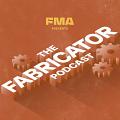
All Episodes
-
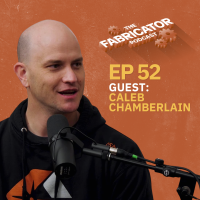 Ep. 052
Ep. 052 -
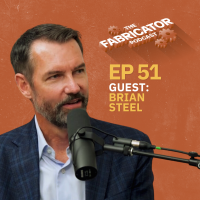 Ep. 051Managing chaos, manufacturing innovation, rolling up with Brian Steel
Ep. 051Managing chaos, manufacturing innovation, rolling up with Brian Steel -
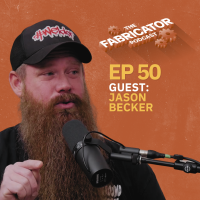 Ep. 050
Ep. 050 -
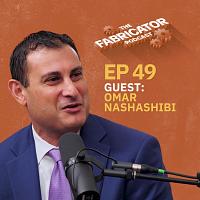 Ep. 049
Ep. 049 -
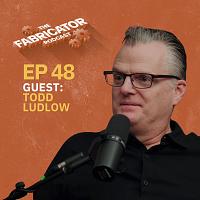 Ep. 048
Ep. 048 -
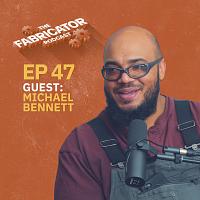 Ep. 047
Ep. 047 -
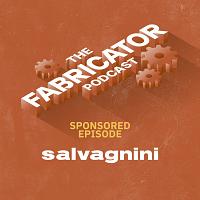 Bonus
Bonus -
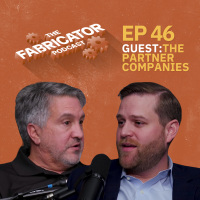 Ep. 046
Ep. 046 -
 Ep. 045
Ep. 045 -
 Ep. 044
Ep. 044 -
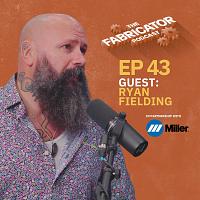 Ep. 043
Ep. 043 -
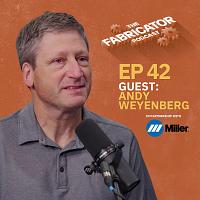 Ep. 042
Ep. 042 -
 Ep. 041
Ep. 041 -
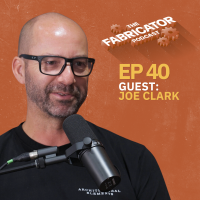 Ep. 040
Ep. 040 -
 Ep. 039
Ep. 039 -
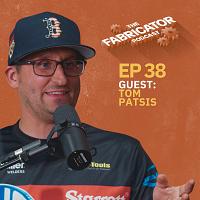 Ep. 038
Ep. 038 -
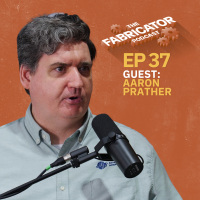 Ep. 037
Ep. 037 -
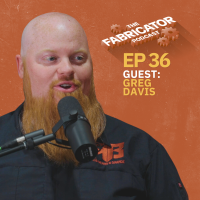 Ep. 036
Ep. 036 -
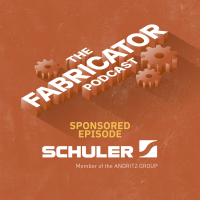 Bonus
Bonus -
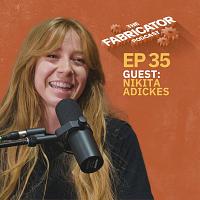 Ep. 035
Ep. 035 -
 Ep. 034
Ep. 034 -
 Ep. 033
Ep. 033 -
 Ep. 032
Ep. 032 -
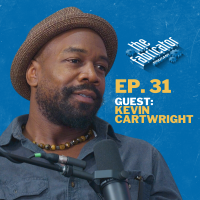 Ep. 031
Ep. 031 -
 Ep. 030
Ep. 030

























